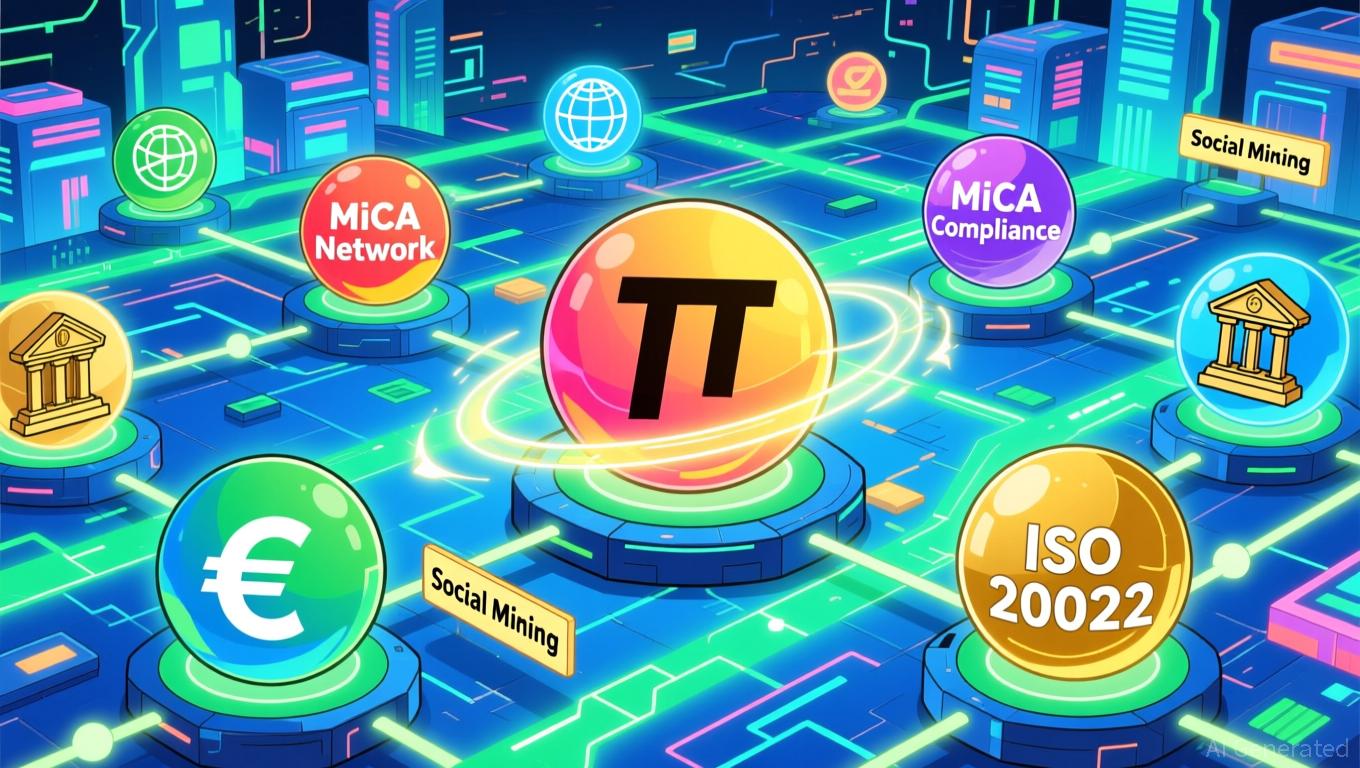Hyperliquid's Rapid Rise: Unpacking the Retail FOMO Phenomenon in DeFi
- Hyperliquid (HYPE) surged in Nov 2025 amid delayed shareholder votes for its $888M DAT merger, reigniting debates on retail FOMO and liquidity risks. - The merger between Rorschach I LLC and Sonnet BioTherapeutics aims to create Hyperliquid Strategies, with 95%+ support reported but finalization postponed until Dec 2. - Retail speculation mirrors TNSR's 11x/37.3% price swing, highlighting risks of FOMO-driven buying and liquidity evaporation in volatile DeFi markets. - AI tools like GeekStake's staking a
The Catalyst: A Merger in Limbo
Hyperliquid’s recent price movement is closely linked to the planned merger between Rorschach I LLC (connected to Paradigm Operations) and the publicly traded
This postponement has created a feedback loop: the uncertainty surrounding the merger has heightened interest from retail traders in HYPE, and the token’s volatile price—fueled by speculation—has increased pressure on the merger’s outcome. This dynamic between governance decisions and market sentiment highlights DeFi’s growing sophistication, where token holders are playing a more active role in shaping protocol developments.
Retail FOMO and the
TNSR
Parallel
Although there is limited direct data on the retail-driven rally in Hyperliquid, trends across DeFi provide useful comparisons. In November 2025, Coinbase’s purchase of Vector.fun—a DEX aggregator on Solana—led to TNSR’s price multiplying eleven times in just two days, only to fall by 37.3% the next day
While Hyperliquid’s rally does not have the same level of on-chain detail, the overall market environment suggests that retail traders are once again chasing speculative gains over solid fundamentals. Platforms like CoinCodex have reported a surge in searches for “how to buy Hyperliquid,”
Liquidity Dynamics and the Role of AI
Hyperliquid’s rally also highlights changing liquidity patterns within DeFi. As trading activity intensifies, both protocols and external tools are evolving to better manage volatility. For example,
Yet, such measures are not infallible. The TNSR incident revealed how quickly liquidity can disappear when speculative interest fades, leaving retail participants vulnerable to tactics like front-running and wash trading. While Hyperliquid’s circumstances are unique, similar questions arise: if the merger is approved, will liquidity providers cash out before the vote? Or will the token’s price find stability as more institutional players get involved?
Risks and Opportunities for Investors
For those looking at Hyperliquid, the main risks stem from its pronounced volatility and the unresolved status of the merger. The postponed shareholder vote introduces a binary risk: a positive outcome could drive prices higher, while a failed vote might lead to a steep decline. Furthermore, the broader DAT sector, which was highly popular in 2024, has slowed in 2025
Nonetheless, there are opportunities for those able to cut through the noise. Hyperliquid’s emphasis on institutional-grade liquidity and its partnership with Paradigm—a major player in crypto—point to long-term promise. Still, as the TNSR example shows, timing and execution are crucial. Retail traders need to weigh their fear of missing out against careful research, examining not only the token’s fundamentals but also the incentives built into its ecosystem.
Conclusion
Hyperliquid’s rally in November 2025 encapsulates the current landscape of DeFi: a mix of institutional strategies, speculative retail activity, and volatility driven by liquidity. While the DAT merger is a notable event, the broader takeaway is the importance of understanding how governance developments and market psychology interact. For investors, the key challenge is to separate true innovation from short-lived hype—a task that requires both technical insight and a healthy skepticism toward FOMO.
Disclaimer: The content of this article solely reflects the author's opinion and does not represent the platform in any capacity. This article is not intended to serve as a reference for making investment decisions.
You may also like
Pi Coin’s Absence from ISO 20022: Prioritizing MiCA Adherence and Advancing Ecosystem Expansion
- Pi Coin's exclusion from ISO 20022 is strategic, prioritizing MiCA compliance and community-driven growth over institutional banking integration. - ISO 20022 focuses on institutional crypto assets like XRP , while Pi Network emphasizes EU regulatory alignment and social mining accessibility. - Analysts note Pi's phased approach includes ecosystem development (wallets, tools) before pursuing banking integration, with MiCA compliance enabling EU exchange listings. - The project's organic adoption strategy

ATOM rises 1.87% over 24 hours as network enhancements and governance proposals unfold
- ATOM rose 1.87% in 24 hours amid Cosmos' Iris-5 upgrade, introducing improved staking and cross-chain features despite 1-year 58.63% decline. - Three governance proposals aim to reallocate inflation funds to developer grants and boost validator incentives, with above-average community voting participation. - Ecosystem growth accelerates with new dApps and a cross-chain stablecoin aggregator, signaling maturing infrastructure and real-world use cases. - Analysts caution short-term volatility persists due

LTC Properties Rises 1.91% Over 24 Hours as Portfolio Adjusts and Dividends Remain Steady
- LTC Properties boosted Q3 earnings with portfolio rebalancing and 80% dividend payout ratio, ensuring monthly dividend coverage despite macroeconomic challenges. - 2025 guidance raised to $2.70-$2.83/share FFO range, reflecting $124.53M-$130.53M in total value as LTC prioritizes seniors housing over skilled nursing assets. - $270M invested in seniors housing portfolio (85% of $460M target), including a 7% yield acquisition, signaling strategic shift to stable income-generating properties. - Long-term deb

Elvis-Inspired Judge Steps Down Following Conduct Issues That Raise Questions About Fairness
- Missouri Judge Matthew Thornhill resigned after disciplinary commission found his Elvis-themed courtroom antics violated judicial conduct standards. - He admitted to wearing Elvis wigs, playing music, and making irrelevant references during proceedings, undermining courtroom solemnity. - His resignation includes a six-month unpaid suspension and 18-month reduced role before permanent departure, following prior 2008 misconduct. - Critics argue his actions eroded judicial impartiality, while Thornhill clai
